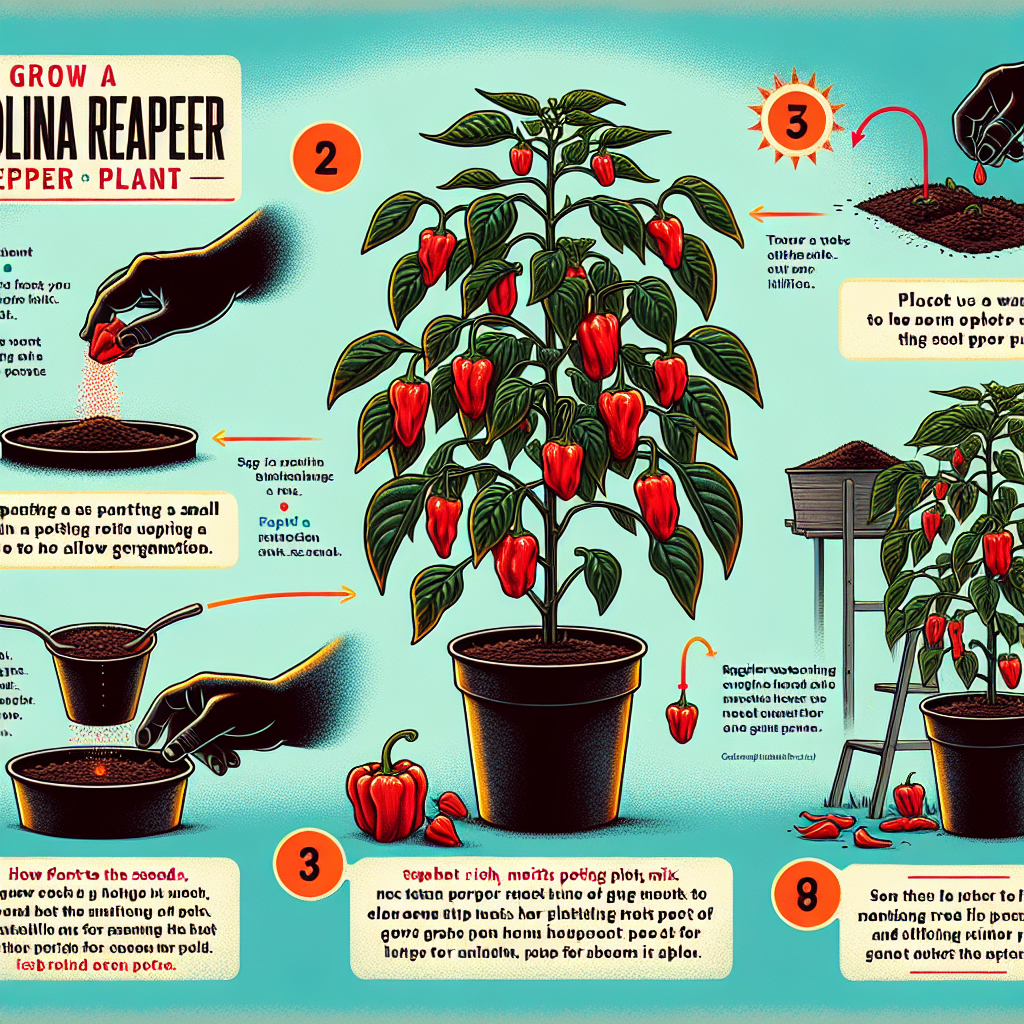
How to grow carolina reaper
Introduction to the Carolina Reaper
The Carolina Reaper is widely recognized as one of the hottest peppers in the world, holding the Guinness World Record for heat since 2013. Developed by Ed Currie of the PuckerButt Pepper Company in South Carolina, this fiery chili can reach heat levels over 2 million Scoville Heat Units (SHU). If you're an adventurous gardener or a chili enthusiast looking to spice up your garden, you might be wondering how to grow Carolina Reaper peppers. This article will guide you through the process, from seed selection to harvesting your spicy bounty.
Choosing the Right Seeds
The first step in successfully growing Carolina Reaper peppers is selecting high-quality seeds. You have two primary options:
- F1 Hybrid Seeds: These seeds are produced by cross-pollinating different varieties to enhance specific traits. They offer consistency and high yield.
- Open-Pollinated Seeds: These seeds are saved from plants and can be used to grow future generations. They may not always produce peppers with the same heat level as the parent plant.
Purchasing seeds from a reputable supplier ensures that you're starting with the best genetics. Look for seeds that are labeled specifically as Carolina Reaper, and avoid uncertain sources.
Optimal Growing Conditions
Carolina Reaper peppers thrive in warm, sunny conditions. Here are some optimal growing conditions you should consider:
Temperature
This pepper variety prefers temperatures between 70°F and 85°F (21°C to 29°C). They can tolerate higher temperatures during the day, but nighttime temperatures should not drop below 50°F (10°C) as cooler temperatures can inhibit growth.
Light
Carolina Reaper plants require at least 6 to 8 hours of full sunlight each day for optimal growth. If you're growing them indoors, consider using grow lights to supplement natural light, particularly in early spring or late fall.
Soil Requirements
The soil for these peppers should be well-draining and rich in organic matter. A pH level between 6.0 and 6.8 is ideal. Use a combination of:
- Loamy soil
- Compost
- Pearlite or vermiculite, to enhance drainage
Starting Seeds Indoors
To get a head start on the growing season, you can begin by starting your Carolina Reaper seeds indoors. Here's how:
- Gather your supplies: You'll need seed trays, seed starting mix, and a warm indoor location or a heat mat.
- Sow the seeds: Fill seed trays with the seed starting mix and sow the seeds about 1/4 inch deep.
- Water adequately: Lightly water the trays until the soil is moist but not soggy. Cover with plastic wrap to retain moisture.
- Provide heat: Keep the trays in a warm location (75°F to 80°F) until germination occurs, which should take about 2 to 3 weeks.
Transplanting Outdoors
Once the seedlings have developed a few sets of true leaves and the threat of frost has passed, you can transplant them outdoors. Follow these steps:
Hardening Off
Before moving seedlings outside, you must acclimate them to outdoor conditions. This process, known as hardening off, typically takes about two weeks:
- Week 1: Gradually expose your seedlings to sunlight and outdoor temperatures for a few hours each day, increasing the duration each day.
- Week 2: Begin leaving them outdoors longer, until they can stay outside full-time.
Planting in the Garden
When the seedlings are ready, dig holes in your garden bed that are spaced about 18 to 24 inches apart. Place the seedlings in the holes, covering them with soil, and water thoroughly.
Caring for Your Carolina Reaper Plants
Once planted, Carolina Reaper peppers require proper care to thrive. Here are essential care tips:
Watering
Keep the soil consistently moist but not waterlogged. Water the plants deeply once or twice a week, depending on the weather. It's crucial to adjust your watering based on rainfall and temperature fluctuations.
Fertilization
Use a balanced fertilizer, specifically one that's high in potassium, as plants begin to flower. A good fertilizing schedule includes:
- Apply a starter fertilizer at transplanting.
- Fertilize every four to six weeks with a balanced organic fertilizer.
Pest and Disease Management
Watch for common pests and diseases that can affect pepper plants, including:
- Aphids: Small bugs that suck the sap. Introduce ladybugs or use neem oil to control them.
- Spider Mites: They thrive in hot, dry conditions. Regular watering and spraying can mitigate infestations.
- Blight & Mildew: Good airflow and avoiding overhead watering help prevent these issues.
“An ounce of prevention is worth a pound of cure.”
Harvesting Carolina Reaper Peppers
Carolina Reaper peppers typically take about 90 to 100 days to mature. When harvesting, consider the following:
Timing
The peppers are usually ready to harvest when they have turned a deep red color, indicating peak ripeness. They can be harvested as they ripen, allowing you to enjoy the heat at various stages.
Handling
Be cautious when handling Carolina Reaper peppers. Their extreme heat can cause skin irritation and, if you touch your face afterwards, a burning sensation. Always wear gloves and wash your hands thoroughly after handling.
Storing Your Harvest
After harvesting, proper storage is crucial to maintain the flavor and heat of your peppers:
- Fresh: Store them in the refrigerator in a sealed bag for up to two weeks.
- Dried: You can also dry them for longer storage. Use a dehydrator or hang them in a warm, dry place.
- Frozen: Slice and freeze them in airtight bags to preserve heat and flavor.
Conclusion
Growing Carolina Reaper peppers can be a rewarding endeavor for those looking to experience and cultivate one of the hottest peppers on the planet. By understanding how to grow Carolina Reaper peppers—from seed selection and planting to care and harvesting—you can successfully grow this fiery treat in your own garden. Just remember to take precautions due to their extreme heat when handling and consuming them!
```By Guest, Published on October 12th, 2024